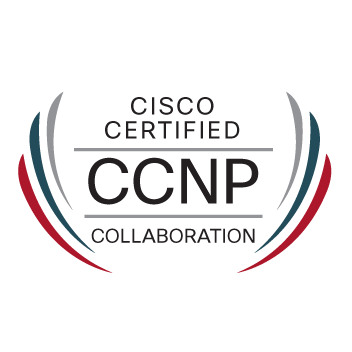- Cisco Community
- Technology and Support
- Collaboration
- Collaboration Applications
- Cisco WebEx CMR traffic from Israel is traversing over the internet all the way to WebEx POP's in US...
- Subscribe to RSS Feed
- Mark Topic as New
- Mark Topic as Read
- Float this Topic for Current User
- Bookmark
- Subscribe
- Mute
- Printer Friendly Page
Cisco WebEx CMR traffic from Israel is traversing over the internet all the way to WebEx POP's in US (66.163.34.21, 209.197.207.36) instead of routing to closest POP in EMEA
- Mark as New
- Bookmark
- Subscribe
- Mute
- Subscribe to RSS Feed
- Permalink
- Report Inappropriate Content
06-04-2019 11:20 AM
Question on WebEx media flow. One of our Customer company in Israel is dialing into our webex meeting using SIP: e.g.923210472@domain.webex.com from their Poly video endpoint. Their Poly RPAD edge device traffic egress out of their firewall in Israel. Now, looking at the packet captures their webex traffic both TCP signalling and RTP/UDP media is flowing back and forth with Cisco WebEx POP's in US instead of routing to closest POP's in EMEA. So why is their webex traffic traversing over the internet all the way to US webex IP's 66.163.34.21, 209.197.207.36 instead of traversing to closest WebEx POP in EMEA?
- Mark as New
- Bookmark
- Subscribe
- Mute
- Subscribe to RSS Feed
- Permalink
- Report Inappropriate Content
06-04-2019 01:30 PM
From what I understand the 66.X.X.X IP address range is the main entry point for all CMR Hybrid style video calls. My polycoms in Europe, and APC, registered to the DMA/RPAD and even registered to CUCM and VCS/Expressway all route through these San Jose addresses.
I believe even my Webex Registered Room Kits use the same IP range as the gateway into webex.
- Mark as New
- Bookmark
- Subscribe
- Mute
- Subscribe to RSS Feed
- Permalink
- Report Inappropriate Content
06-04-2019 02:48 PM
Hi Mike - From entry point if you mean the signalling piece of the call establishment is in US then its understandable. But the media flow should be happening based on geo-DNS out of the closest WebEx POP which is currently not the case.
- Mark as New
- Bookmark
- Subscribe
- Mute
- Subscribe to RSS Feed
- Permalink
- Report Inappropriate Content
06-05-2019 04:44 AM
- Mark as New
- Bookmark
- Subscribe
- Mute
- Subscribe to RSS Feed
- Permalink
- Report Inappropriate Content
06-05-2019 06:07 PM
There are two ways to optimize the traffic path for now:
1. For CUCM/VCS-registered codecs install a Webex Video Mesh node which will convert from SIP to HTTPS, allowing traffic to use the nearest POP (aka shortest/best path to the Webex backbone).
2. Register the codec directly to the Webex cloud so it uses HTTPS, again allowing it to hit the nearest POP.
- Mark as New
- Bookmark
- Subscribe
- Mute
- Subscribe to RSS Feed
- Permalink
- Report Inappropriate Content
06-05-2019 06:18 PM - edited 06-05-2019 06:25 PM
Just here to say that Jonathan has it correct.
There are a ton of 'hot potato' routing scenarios that we use to get traffic to/from our Webex backbone as quickly as possible, but SIP/H323 calling directly into Webex Cloud Proxies for meetings is not one of them [yet], they still will home-run wherever the Webex site is provisioned. So if the Webex site was in EMEA, it would terminate in our European datacenter, but if the site is in north america, the traffic will take that long route.
Cloud registered devices [incl Webex boards], Teams clients, and Video Mesh Node will all leverage hot potato routing [STUN] and not take this long path over the Internet.
Another option is to leverage our equinix partner for Webex Direct Connect, which is super easy to implement especially if you are already an Equinix customer...
~Joe Tansey
CCATG/Webex Technical Marketing

- Mark as New
- Bookmark
- Subscribe
- Mute
- Subscribe to RSS Feed
- Permalink
- Report Inappropriate Content
06-05-2019 08:07 PM
Thank you Joe and Jonathan for your response. I now have understanding of how webex SIP/H323 traffic routes globally.
I agree that Video Mesh Node, WebEx Direct peering and WebEx Cloud registered device options will help optimize this traffic flow, however, I do hope that Cisco prioritizes this and eliminate home-run architecture for SIP/H323 webex traffic. As Cisco customers we can implement one of the above options, but we cannot ask other non-Cisco customer companies that we work with to implement one of the above mentioned 3 options, just to reduce latency of webex SIP/H323 traffic from their Environments into WebEx Cloud for WebEx Meetings.
- Mark as New
- Bookmark
- Subscribe
- Mute
- Subscribe to RSS Feed
- Permalink
- Report Inappropriate Content
06-06-2019 09:44 AM
By the way guys what is the max acceptable latency for WebEx SIP/H323 traffic between any one of the 3 WebEx Sites (SJ, London, Singapore) and the Customer Edge device for an optimal WebEx experience?
- Mark as New
- Bookmark
- Subscribe
- Mute
- Subscribe to RSS Feed
- Permalink
- Report Inappropriate Content
06-06-2019 12:00 PM
it's a sliding scale, but I'd like to see you at <150ms 1-way latency peak for the best quality experience.
You can check yourself what your latencies are by using our looking glass service [lg.webex.com], select one of our datacenters to do a simple ping or tracert to say the external/public IP of your expressway/expressway cluster or something like that at your location.
Our "secret code" is the first 3 digits of the datacenter are the same as the airport code the city is in [EG SJC = San Jose]
~Joe Tansey
CCATG/Webex Technical Marketing

Discover and save your favorite ideas. Come back to expert answers, step-by-step guides, recent topics, and more.
New here? Get started with these tips. How to use Community New member guide



